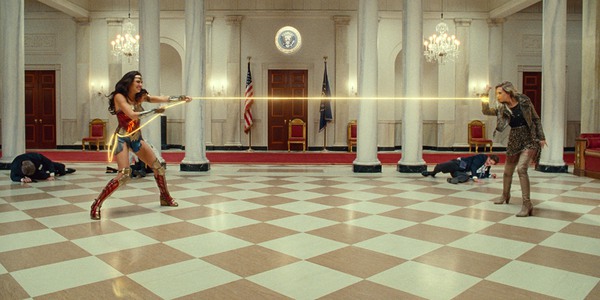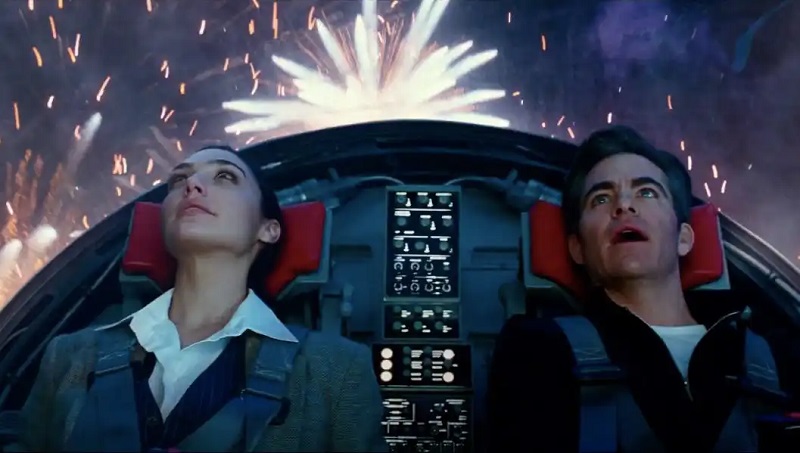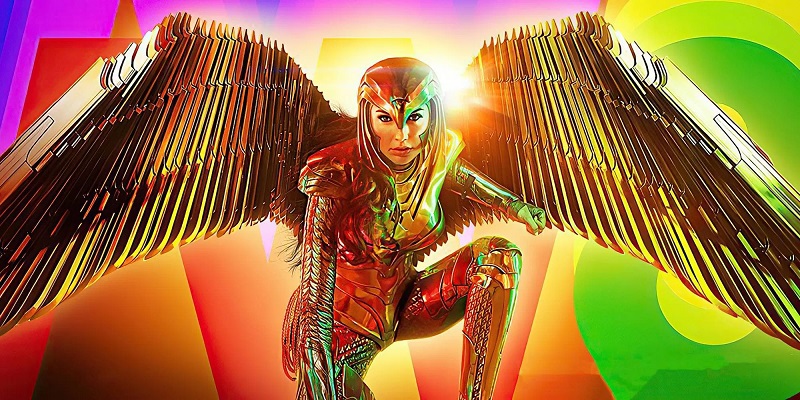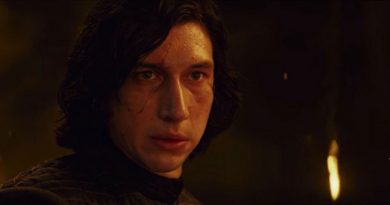Diana’s Heroine’s Journey Continues in Wonder Woman 1984
The character of Wonder Woman has a long, and sometimes troubled, history in the pantheon of DC Comics superheroes. Across the decades she has remained one of the flagship characters in the comics, and one of the few female superheroes to have led an eponymous television series. In terms of global visibility and mainstream reach, though, contemporary popular culture has few comparisons to the blockbuster movie. For that reason, the commercial and critical success of 2017’s Wonder Woman film marked an important milestone in reaffirming the popularity and importance of Diana Prince and her superheroine alter ego.
Like several of its peers in the recent DC film slate, including Man of Steel and Aquaman as well as Joker, the Wonder Woman movie functioned as an origin story. Diana leaves the paradise of Themyscira behind, entering the world of man amid the horrors of the Great War. Along the way to fulfilling her destiny to become the Godkiller who can stop Ares from consuming the world in destruction, Diana’s character path follows the cinematic Hero’s Journey structure outline by Christopher Vogler, which is based on the monomyth described by Joseph Campbell. At the same time, her story arc also follows the Heroine’s Journey framework created by Maureen Murdock, which has some structural similarities to Campbell but which identifies a cycle of self-discovery rather different from the traditional male heroes at the center of Campbell’s study. By incorporating both aspects in a single tale, Wonder Woman told an origin story with many very familiar elements, while also reinforcing some of the important ways an archetypical heroine’s story differs from an archetypical hero’s.
By its nature, the 2020 sequel Wonder Woman 1984 could not reprise the character arc of the first film. Especially because Diana is not simply a superhero but a demigod, it made sense for her second film to follow another insight from Campbell’s work: that heroes do not undergo only one journey through the monomyth but rather a series of heroic cycles, each one bringing the hero closer to their true self. Thus, while the plot of Wonder Woman 1984 also easily maps onto Vogler’s cinematic structure, the character arc of the movie is not about Diana rising to the challenge of being a hero, but instead about Diana growing and changing further toward the heroine that the world will need her to be in the decades ahead.

The Heroine’s Journey in Wonder Woman 1984
Wonder Woman 1984 begins with a flashback to Themyscira that sets the context for the entire film. It reestablishes the literally mythical nature of Diana’s story and powers. It establishes the theme of the movie: the importance of truth. And it sets out Diana’s character arc, emphasizing that even as a child she had an inclination to resist or resent uncomfortable truths that get in the way of what she desires – and that she cannot reach her full potential until she accepts the truth, no matter how disappointing or painful. With those elements as the storytelling foundation, the movie jumps forward to its “present day” time period in the titular year.
As in Wonder Woman, Diana is the protagonist whose actions and choices drive the story in Wonder Woman 1984 from start to finish. Almost seventy years after the events of the first film, she has become accustomed to taking action on her own, as her heroics to protect innocent shoppers at the mall demonstrate. Once she recognizes the dangers posed by the Dreamstone – a realization first arising because it granted her wish to bring Steve back from the dead – Diana makes it her mission to end the threat. She hunts the stone from Barbara’s office to Max Lord’s office to Egypt, where she learns that Lord has wished the stone’s power upon himself. She pursues Lord first to the White House, then to the satellite broadcast facility, where she is finally able to stop him. (It is difficult to reconcile criticism of Wonder Woman 1984 as having a confusing plot with the quite linear progression of the story. Perhaps those who watched the film via streaming on HBO Max experienced a greater likelihood of being distracted during key moments of character motivation or exposition.) Although her quest becomes a pursuit of the antagonist, each step in the plot is motivated by Diana confronting the emotional challenges presented to her by the story.
Alongside the mission to prevent Lord from causing harm, Steve and Barbara form the vectors that push Diana to face difficult truths. As in the first film, Diana readily engages in teamwork, such as academic research and investigation with Barbara and action sequences with Steve. While Steve’s choices reaffirm that he remains the hero and good man Diana fondly remembers, Barbara’s choices serve as an important reminder to Diana that great power can corrupt even those who were good people beforehand – and that not everyone with power is willing to make sacrifices for the greater good, as she and Steve do. By the time she faces down apex predator Cheetah and then hyperpowered Max Lord alone, as she did with Ares, she has incorporated those experiences into her understanding of her adversaries and herself.

But Diana’s love for Steve is undeniably the central relationship of the film. Her enduring sense of loss motivates her fateful wish. Rather than an invisible jet as a tool at her disposal, Diana’s love for Steve motivates her to unlock her potential further – it is her own power that projects a field of invisibility around their “borrowed” aircraft to keep Steve’s flying protected from the modern technology of radar. Later, Steve’s words to her about the experience of flight guide her to unlock an even greater new power that renders the availability of a jet entirely unnecessary – because, as the visual homages to the Christopher Reeve and Richard Donner films make clear, Wonder Woman can fly. But the heartbreaking truth is that Steve is and has been long gone from her life, and the emotional lesson that Diana must learn is that she must finally be willing to let him go. In their last conversation, Steve is not teaching Diana this lesson, but rather offering her reassurance and emotional permission to accept the truth she has already realized for herself. By renouncing her wish, Diana proves herself capable of both a spiritual rebirth, as the champion of truth, and a literal rebirth, with the vibrant return of her previously fading powers.
After this emotional metamorphosis in her internal journey into further becoming her true self as a heroine, Diana still must confront and overcome her external antagonists. In Wonder Woman 1984 she has two, and she faces them in different ways. Cheetah’s pursuit of power was selfish, and wielded for revenge or power. Once Diana recognizes that her words cannot reach Barbara, her only option is to defeat Cheetah in combat. Max Lord, on the other hand, certainly had deeply selfish desires for wealth and power, as well – but he also felt a deep love for his son, though it had become twisted into a quest for glory to impress the boy. With an assist from the lasso, Diana is able to reach that paternal love still residing within Max and show him that his wish for greater power is about to destroy everything he sought for his son. That truth leads Max to renounce his wish, and here Diana has prevailed with the same mantra as the first film: “Only love can save the world.”

Comparing Wonder Woman 1984 to Other Heroine’s Journeys
Having undertaken two cycles of her Heroine’s Journey in a pair of films, Wonder Woman apparently will get a third cycle: only days after the release of Wonder Woman 1984, DC and Warner Brothers officially confirmed that a sequel, again starring Gal Gadot and directed by Patty Jenkins, would be “fast-tracked” to “conclude the long-planned theatrical trilogy.” Rather than a period piece like the first two movies, Jenkins revealed that the third film will take place in the contemporary timeline of the DC superhero cinematic universe. Jenkins also acknowledged that, unlike Max Lord, the fate of Cheetah was deliberately left open at the end of the film – which makes for good storytelling, because Diana will have to find a way to defeat or redeem the villain she inadvertently created. Two weeks before Wonder Woman 1984 released, however, Lucasfilm announced that Patty Jenkins would be writing and directing a Star Wars movie, Rogue Squadron, slated for release in December 2023. Given the time commitment involved in any major blockbuster, whether superhero or Star Wars, it seems likely that Jenkins will not create both projects simultaneously. Regardless, film release scheduling is very much subject to change several years or more into the future.
Even without a third film, Wonder Woman is in rare company in having two heroic cycles in a Heroine’s Journey portrayed in her movies. The MCU’s Captain Marvel also had a record-breaking origin story film in 2019, and her second solo movie currently is scheduled for release in November 2022. The pandemic-delayed Black Widow film, apparently a one-off story, is now slated for May 2021. In Star Wars, neither Leia nor Padmé was the central protagonist of their respective trilogy, and the contrast between Rey’s arc in The Last Jedi and Diana’s in Wonder Woman 1984 is quite stark: Rey has no heroic action sequence of her own, like Diana in the mall, but only the throne room fight alongside the villainous Kylo Ren; Rey is reactive to the emotional beats created by Luke and Kylo, rather than wielding agency to take the initiative in pushing the narrative forward; Rey is all but absent from the final act of the film, which focuses on the showdown between Luke and Kylo in which Rey does not participate. For much of The Last Jedi, Rey is a passenger; in Wonder Woman 1984, Diana is the propulsive force.
Perhaps the closest comparison to Wonder Woman at this point is Katniss Everdeen in The Hunger Games franchise. Like Diana, Katniss undergoes the familiar Hero’s Journey progression in her first film, The Hunger Games, and then a second cycle in its sequel, Catching Fire. Over the span of three books and four film adaptations, Katniss evolves from a subsistence hunter in District 12 to the Girl on Fire to the Mockingjay. Many of the themes in The Hunger Games are even more timely than when the books (2008-2010) and movies (2012-2015) were initially released, including bravery in the face of autocracy, the dangers of massive disparities in wealth and resources, and the terrible social price of propaganda and unreality as entertainment. But The Hunger Games is ultimately a bittersweet and tragic story in a dystopian setting, whereas the Wonder Woman films are much more in the vein of aspirational superhero tales.
It is surely no coincidence that the Wonder Woman movie with the core theme of truth is set in the same year as George Orwell’s famous novel 1984, itself a dystopian cautionary tale about propaganda, fake news, and autocracy. But Wonder Woman 1984 does not mirror or reaffirm Orwellian dystopia. Instead, Wonder Woman 1984 is a call to action, optimism, and courage to use the light of truth to prevent the dystopia from happening. Wonder Woman believes that love can save the world, and Wonder Woman 1984 reminds us that a commitment to truth will save the world, too.
.
Related Links:
- The Heroine’s Journey in Wonder Woman (2017 film)
- Review: Superwomen: Gender, Power, and Representation by Carolyn Cocca









